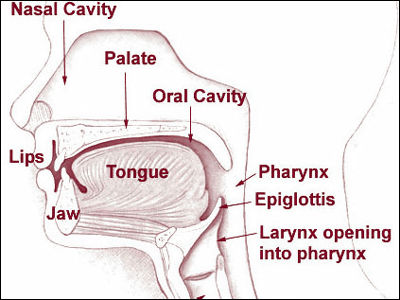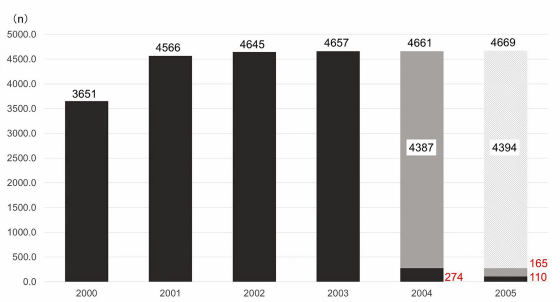It is predicted that about 17,000 people will be at risk of developing the cervical cancer vaccine and more than 4,000 will die due to the discontinuation of the cervical cancer vaccine in Japan.

Vaccination against
Potential for cervical cancer incidence and death resulting from Japan's current policy of prolonged suspension of its governmental recommendation of the HPV vaccine | Scientific Reports
https://www.nature.com/articles/s41598-020-73106-z
HPV has a high risk of carcinogenicity, and cases of infection at birth have been reported in addition to sexual activity. It has also been found that HPV causes not only cervical cancer but also pharyngeal cancer and tongue cancer.
What you need to know about HPV (human papillomavirus) that is transmitted by sexual activity as a cause of cancer of the throat and tongue --GIGAZINE

In Japan, HPV vaccination has been available at public expense since 2010, and from April 2013, regular vaccination for 6th grade to 1st grade of high school, which is the target age for vaccination, has started. However, due to the side effects of pain in some vaccinated people, the government has withdrawn aggressive vaccination recommendations since June 2013, while continuing to bear the public expense of vaccination. I will.
According to a report from a research team at the Graduate School of Medicine, Osaka University, the HPV vaccination rates for people born between 1994 and 2005 are as follows. The vaccination rate for children born in 1994-1999, which was the target age for vaccination at the time when vaccination was recommended, has exceeded half, but the vaccination rate has dropped significantly since 2000, the target age after the withdrawal of the recommendation, in 2002. It has been less than 1% since the year.
Born in 1994: 55.5%
Born in 1995: 73.5%
Born in 1996: 78.2%
Born in 1997: 78.8%
Born in 1998: 78.7%
Born in 1999: 68.9%
Born in 2000: 14.3%
Born in 2001: 1.6%
Born in 2002: 0.4%
Born in 2003: 0.2%
Born in 2004: 0.1%
Born in 2005: 0.0%
The graph below shows an estimate of the number of women born between 2000 and 2005 who will develop cervical cancer since the vaccination recommendation was discontinued. The vertical axis represents the estimated number of cases and the horizontal axis represents the year in which the woman was born. The black areas represent the estimates as of 2019, and the gray areas represent the estimates as of 2020. The light gray areas represent estimates if no vaccination recommendations were made after 2021.

Below is a graph showing the estimated number of women born between 2000 and 2005 dying from cervical cancer. The vertical axis represents the estimated number of deaths and the horizontal axis represents the year in which the woman was born. The black areas are estimates as of 2019, gray are estimates as of 2020, and light gray are estimates when vaccination is not recommended after 2021.

The research team found that more than 17,000 women born between 2000 and 2005 developed cervical cancer, up to more than 4,000, due to the failure to resume vaccination recommendations by 2020. I guessed that he would die. If vaccination recommendations are not resumed after 2021, more than 4,000 people will be at risk of developing cervical cancer and more than 1,000 may die.
'We want the government to resume vaccination recommendations as soon as possible and to provide unvaccinated women with an affordable opportunity to get vaccinated,' the research team said in a paper. We are seriously seeking it, and we should also strongly recommend that unvaccinated women be tested for cervical cancer, 'he said, urging the resumption of vaccination recommendations.
Related Posts:
in Science, Posted by darkhorse_log






